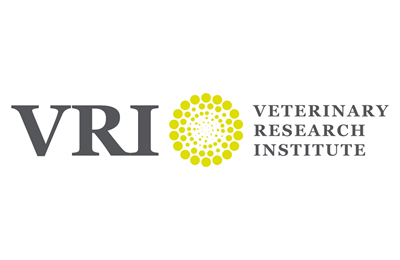 Vera Fichtelova and colleagues from the Veterinary Research Institute, Brno, Czech Republic published a study on the optimal method for detecting MAP-infected dairy herds using environmental fecal sampling. They found that fecal samples collected from the floor of the milking alleys (paths for cows to come into the milking area close to the entrance into the milking parlor holding pens) tested by qPCR (also known as real-time PCR) was a simple and effective method for detection of dairy herds with a significant MAP infection rate.
Vera Fichtelova and colleagues from the Veterinary Research Institute, Brno, Czech Republic published a study on the optimal method for detecting MAP-infected dairy herds using environmental fecal sampling. They found that fecal samples collected from the floor of the milking alleys (paths for cows to come into the milking area close to the entrance into the milking parlor holding pens) tested by qPCR (also known as real-time PCR) was a simple and effective method for detection of dairy herds with a significant MAP infection rate.
ABSTRACT
The objective of the present study was to evaluate the suitability of environmental sampling to screen Czech dairy herds to detect Mycobacterium avium ssp. paratuberculosis (MAP) and to find the most convenient location for the MAP detection in the lactating cow area. Environmental samples (ES, n = 72) from milking parlour holding pens (n = 19), milking alleyways (n = 19) and free-stall alleyways (n = 34) from 19 herds were simultaneously tested to detect MAP by a quantitative PCR (qPCR) and bacterial culture. Eight and thirteen samples from the milking parlour holding pens, twelve and eleven samples from the milking alleyways and eleven and eighteen samples from the free-stall alleyways were qPCR and culture positive, respectively. A 4.6 times higher probability of being culture positive than qPCR positive was detected for the assessable MAP detection results from the free-stall alleyways [P = 0.008 6, odds ratio (OR) = 4.572 8)] and no association was found between the results from the milking parlour holding pens (P = 0.191 4) and the milking alleyways (P > 0.999 9) and the diagnostic method used. The percentage of qPCR-positive samples in the tested locations was detected for the milking alleyways (63.2%), free-stall alleyways and milking parlour holding pens. The herd infectious status was in agreement with 16 (84.2%), 14 (73.7%) and 12 (63.2%) qPCR results from the milking alleyways, free-stall alleyways (32.4%) and milking parlour holding pens (42.1%), respectively. No statistically significant differences were detected for these results (P = 0.396 1). MAP was detected by the qPCR and bacterial culture in all three locations where the ES were collected. We suggest an environmental sampling followed by MAP detection by qPCR as an easy-to-perform time-saving protocol for MAP screening in Czech dairy herds. Although the milking alleyways seem to be the most convenient location for the environmental sampling, this assumption was not statistically supported.
COMMENT
The first step toward Johne’s disease control in commercial dairy herds (herds in the business of selling milk, not breeding animals) is to establish which herds have a significant MAP infection rate. Environmental fecal samples tested by qPCR provides a rapid, low-cost methods for testing the whole dairy herd.
The environmental fecal sample methods described in the U.S. Uniform Program Standards for the Voluntary Bovine Johne’s Disease Control Program are much more difficult to perform. Page 33 of that document states: “From each dairy farm, collect two composite environmental fecal samples tested by an MAPDT (MAP detection test meaning culture of PCR) from each of the following locations on the farm: manure concentration areas (cow housing alleyways or gutters), manure storage areas (lagoons, piles, pits, or manure spreader), and another manure concentration area (sick cow pens or other cow alleyways and travel-ways). A total of six samples should be collected for submission to the diagnostic laboratory.”
The Czech system may allow more herds to be tested at less cost and therefore may be preferable to the U.S. system. However, the critical question is whether the herd-level sensitivity is comparable between the U.S. method and the newly described Czech system and also the comparative utility of the two methods. A testing system that is too onerous and therefore not used is not useful.